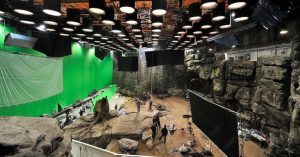
The evolution of magic as an art form has come a long way since its inception centuries ago. From the days of street performers and traveling magicians to the modern-day spectacle of large-scale illusions and stage productions, magic has undergone a major transformation in the 21st century. This transformation has been brought about by advancements in technology, changes in the entertainment industry, and the rise of social media. In this article, we’ll explore the evolution of magic in the 21st century and what makes it unique from the traditional forms of magic.
Magic has always been a form of entertainment that captivates audiences with its illusions, sleight of hand, and mystery. In the past, magicians were often seen as traveling performers, taking their acts to various venues and captivating audiences with their tricks and illusions. With the advent of television, magic became a popular form of entertainment, and many magicians, such as Rafa Tamarit, began to make a name for themselves with their incredible illusions and captivating stage presence.
However, in the 21st century, the world of magic has undergone a major transformation. With the advent of technology and the rise of social media, magicians have been able to reach a larger audience than ever before. Magicians are now able to use digital tools and platforms to share their illusions and stunts with millions of people around the world. This has given rise to a new generation of magicians who are using technology to push the boundaries of what is possible in magic.
One of the biggest changes in the world of magic in the 21st century is the use of technology. Magicians are now able to use special effects, projection mapping, and other digital tools to create illusions that were previously impossible. For example, some magicians are now able to create illusions that make objects appear to levitate or disappear in mid-air, thanks to the use of special effects and digital tools. This has allowed magicians to create more dynamic and visually stunning performances that are sure to captivate audiences.
Another major factor that has contributed to the evolution of magic in the 21st century is the rise of social media. Social media platforms like YouTube and Instagram have allowed magicians to reach a wider audience and share their illusions with people from all over the world. This has given rise to a new generation of magicians who are using social media to showcase their skills and connect with fans. Many magicians are now able to build a large following on social media, and this has given them the platform to showcase their illusions and connect with fans on a much larger scale.
The entertainment industry has also undergone major changes in the 21st century, and this has had a significant impact on the world of magic. With the rise of digital entertainment, many people are now seeking out more unique and interactive experiences. This has led to a renewed interest in magic as a form of entertainment, as people are looking for something that is more engaging and interactive. Magicians are now able to create unique and captivating performances that are sure to leave audiences spellbound.
Another aspect of the evolution of magic in the 21st century is the increased focus on storytelling. In the past, magic was often seen as a series of tricks and illusions that were performed for their own sake. However, in the 21st century, magicians are now placing a greater emphasis on the narrative of their performances. This has led to the creation of more captivating and immersive performances that are sure to leave audiences on the edge of their seats.
In conclusion, the evolution of magic in the 21st century has been shaped by a number of factors, including advancements in technology, changes in the entertainment industry, and the rise of social media. The world of magic has undergone a major transformation.






